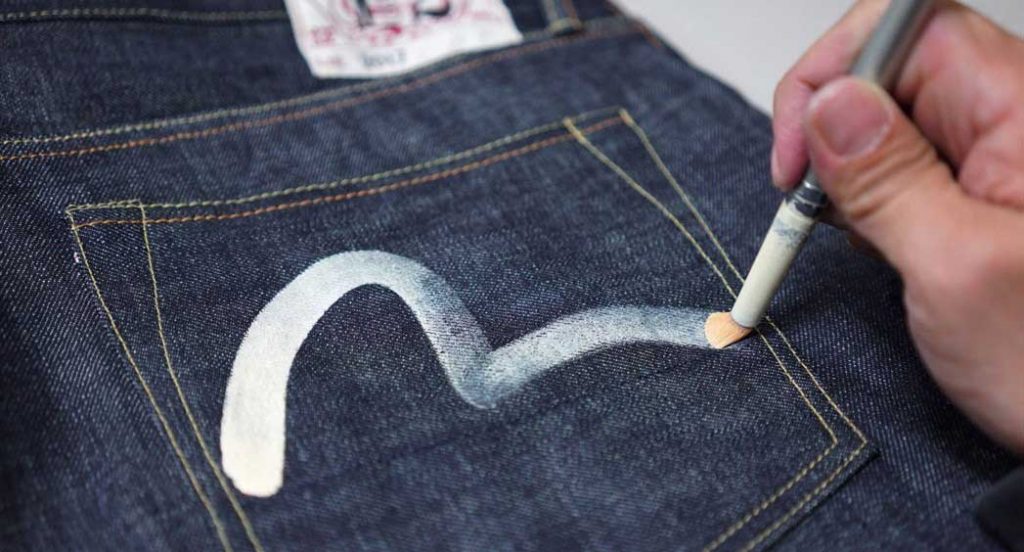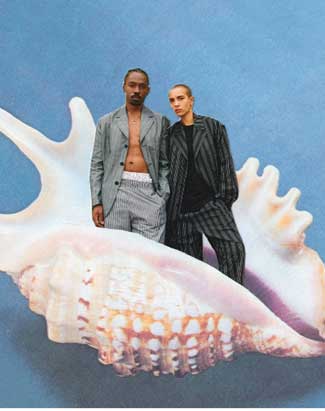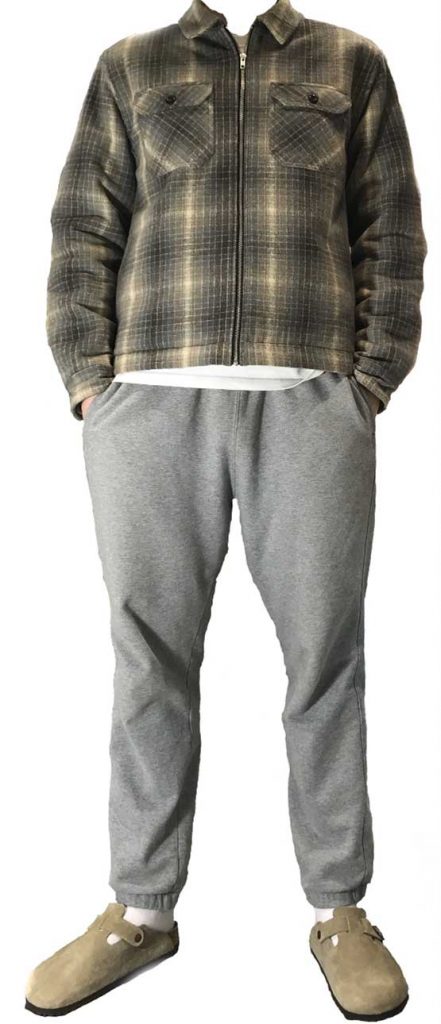Fashion Over Lockdown
By Archie Forrester
My name is Archie, and I am a first year Economics student. Fashion is a personal hobby of mine, observing it over the course of lockdown has been fascinating and something I wanted to impart to others. Lockdown started back in March of 2020 and since then it has been a perpetual cycle of reading articles, watching online content and browsing online shops. The consumption of clothing has shifted massively in this period (for obvious reason) but equally as has how I felt about particular brands, sites and even influencers.
Online retail has been one of the biggest influences of the last year with Asos’ revenue increasing just under 20% from 2019 to 2020. At first this statistic seemed counter-intuitive, but with everyone sat at home what else is there to do other than browse webstores and get on the latest tik-tok trend?

Photo from: https://www.evisu.com/eu/evisu-history
Depop has been the biggest platform for me over lockdown for not only sourcing vintage, discounted and second-hand clothes but also selling. With the resurgence of ‘Y2K’ as a keyword, this punk youth and London’s Southbank inspired aesthetic has become a staple look. Baggy jeans emblazoned with Ed Hardy, Von Dutch and True Religion; paired with pseudo vintage air-max and the latest streetwear bedroom start-up label t-shirt or jumper. The combination of the accessibility of apps like Depop and Tik-tok have meant it has never been easier to dress like your favourite influencer. While I am personally not the biggest fan of this very logo-centric trend, I hope this is the start of a movement towards recycling old trends and as result wearing clothes that are often older than you!
Sustainability is key when it comes to fashion, with the landscape constantly changing for what is in and out for many entry level clothing aficionados. People on the lower end of the budget following their favourite influencer, being able to buy something that has already been loved and worn by others is a great thing when it comes to the longevity of not only brands but also the life cycle of the garment itself, thus limiting the environmental detriment. For many people this ‘re-sell’ value (that was once limited to designer brands and limited release capsules) being applied now to a lot of purely vintage pieces means it is easier than ever to have something then flip it and get most, if not all, of your money back. I conclude this to be very positive, not only can people save money by just rotating their wardrobe, but less clothes are being thrown out, bought new and ultimately limiting the demand for fast fashion in exchange for positive change.
Sustainability has been something that I have become more and more cognizant of. Over the last few years, the long-term damage to the environment and resulting climate change has become a pressing concern for the vast majority. The government is making moves to limit this like the plan to ban the selling of petrol cars by 2030 and the construction of Hinkley Point C, meanwhile what can I do in my life to make a difference? ‘Ninety-two million tonnes of waste are produced annually by the fashion industry and seventy-nine trillion litres of water is consumed’ (Niinimäki et al,2020). “Nearly 70 million barrels of oil are used each year to make the world’s polyester fibre, which is now the most commonly used fibre in our clothing. But it takes more than 200 years to decompose.” (Forbes, 2015). These statistics highlight the sheer volume of waste that is happening globally in this industry. Production of textiles and garments is happening at such a preposterous rate that it is undeniable the damage that is being done. “The fashion industry is responsible for 8% of carbon emissions” (UN Environment, 2019). This final fact for me was potentially the most damning, if you think about all the goods produced globally and all emissions, fashion is responsible for nearly one tenth of that.
Looking deeper into this issue, it is clear that change is essential to make sure that we can limit the damage done but also allow creativity and the industry to flourish rather than the mass consumption of fast fashion. The biggest argument for fast fashion for me is the affordability. I can preach all day long about buying ethically but I am in a privileged position, to be able to shop with places that are sustainability minded. For a lot of people, it is impossible to be able to afford to shop Asos sustainability section for example, or other brands. And that is if they even have access to these retailers. For a certain proportion of people Primark and other mass production shops serve a purpose: to allow people to buy and wear clothes that they can afford. At the end of the day that is a crucial service for them. And who am I to tell them not to shop there? I believe we should all do what is possible to make a difference within our own means. Put our money where our mouth is, eventually the change will come.

Brands that have been making the move towards sustainability deserve recognition too. Our Legacy (https://www.ourlegacy.se/) springs to mind for me. I first became aware of them on their recent work with Stϋssy, with sustainability as a selling point; they have created the ‘Work-shop’ subline that is entirely using recycled materials from their mainline collections. The brand itself uses small factories in Europe and limited collections at an exclusive price point to maintain an ethical approach to garment production.
Maintaining the Scandinavian theme, Weekday (https://www.weekday.com/) is another brand that has taken an ethical approach to fashion. Since 2015 all of their cotton has been organically produced and 2020 has seen them now using recycled products too. They have a section on their website dedicated to setting out their long-term goals for sustainability for them but also the H&M group as a whole. Their clothing is much more affordable than the aforementioned Our Legacy, they provide a wide range of basic garments for both men and women on a range of styles from baggy to skinny and everything in between. They also offer a student discount too which is always a bonus.
The other brand that I feel deserves recognition is the notorious House of Sunny (https://www.houseofsunny.co.uk/). The London based womenswear label started in Hackney 2011 is a go to for vivacious colourful design at a very affordable price point. They release two collections a year and has been seen on the likes of Kendall Jenner and Bella Hadid. In terms of design and affordability, there is little to no competition in womenswear especially considering their approach to sustainability. They use innovative technology to limit water waste with their denim, vegan leather as a conscious effort regarding animal welfare and have minimising waste as their goal.
My ultimate recommendation though is always buying second hand, vintage and even re-cycling your own clothes. Long lasting and well-made garments are all too often left to rot in a charity shop with a lot of life still left in them. And while there is a spectacular abundance of rubbish, it makes it all the more rewarding to find that hidden gem. The more we do this the less rubbish there will be filling our wardrobes and I believe the environment will be better off for it!

Photo from: https://instagram.com/kendalljenner
To round things off, I will mention what I have been wearing. Lockdown and online learning have meant spending all day long inside. So, for me comfort has been key to staying sane. Birkenstocks have been an ideal ‘house shoe’ for me offering great comfort and are super easy to slip on and off. Joggers have also been an absolute must have, while I usually like to wear shorts, during these colder months I have been wearing a pair of baggy grey Weekday joggers. Super simple but I love the way they fit. On my top half I have also been keeping it simple with a white t-shirt, which you can get from pretty much anywhere. Mine is Weekday. Finally, my jacket, a more recent investment a Stϋssy wool work jacket I purchased from depop. Stϋssy always provides great quality in their garments, this jacket it particularly warm and being able to get it massively under the retail price meant I just had to make the investment for now and for when we can one day get out and about once again!

The Limit
The Limit showcases the creativity that exists within the student population, creating a sense of community.